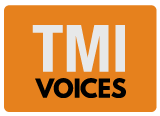Dyslexia is a condition where a person faces difficulty with reading and writing caused by the brain's inability to see the difference between some letter shapes.
 It isn't easy to detect when a person who has it is young.
It isn't easy to detect when a person who has it is young.
Usually it's only when a child starts to go to school that one realises something is wrong.
That's when the dyslexic child is unable to read or write properly.
If the problem is not immediately identified and corrected, the child usually ends up with behavioural problems.
On one day, the child can be on his or her best behaviour.
And then, the very next day, he or she can display temper tantrums and be extremely difficult to deal with – even though most dyslexics are in fact generally very intelligent.
As pointed out earlier, persons who are dyslexic process things in a differently way than those without the condition.
This is why teachers in a classroom must be able to identify dyslexic children and attend to their special needs.
Appropriate assistance should be given to them, otherwise they will only have low esteem and resort to behavioural problems.
One person who understands dyslexia well is Sariah Amirin.
The 72-year-old is president of the Dyslexia Association of Malaysia (Persatuan Dyslexia Malaysia) in Kuala Lumpur.
It is a post which she has been holding since 1998.
Sariah says for every 20 children, one child is dyslexic.
"In fact, dyslexia is the most common condition among people with learning disabilities," Sariah told me when I spoke with her last week.
"There are five in every 1000 children who have epilepsy. Two in 1,000 persons who have cerebral palsy, one in every 6,000 persons who have Down's syndrome – and five in 100, who have dyslexia."
But the sad part, she says, is that even though dyslexics make up the most numbers of people with learning difficulties, in reality, they get very little support.
Sariah further points out that one can't tell if a person has dyslexia just by looking at them.
They look very normal.
In fact, many dyslexic persons are intelligent and skilful. Quite a few of them are very good at drawing and music, and even turn out to be outstanding singers.
With proper intervention, dyslexic persons in Malaysia have gone on to become computer and Internet specialists, entrepreneurs and performing artists. One person who came to Sariah's centre for help even went on to become an airline pilot!
The majority of children with dyslexia find out about their condition around the age of seven – when they are in school and develop problems.
The lucky ones are those whose parents go the extra mile to find out more about their condition and seek help at one of the dozen dyslexia centres around the country run by the Persatuan.
The child is then referred to a psychologist for assessment and confirmation that he or she is dyslexic.
(In Western countries, this is one of the reasons a psychologist is provided in schools.)
The unlucky ones, sadly, go the other direction. They eventually drop out of school. A disturbing number of them also end up in a life of crime because of the lack of support and poor self-esteem.
As Malaysia prepares to commemorate its 58th independence day celebrations later this month, here are a couple of Merdeka Day wishes we would like to see for dyslexic Malaysians in the country:
1) All teachers need training on dyslexia: they need to know teaching techniques and strategies for dyslexic children from as early as five years old. The best way to get positive and effective results is to start working with such children from an early age.
The good news is that the success rate of early intervention is from 70% to 80%.
Teachers need to explore why some kids are not able to read or write, instead of brushing them away as "stupid" or "lazy".
A proper educational assessment is required, one that gently probes into their sentence constructions, spelling – and a little bit of their intelligence.
For instance, Sariah says a five-year-old dyslexic child should be given a set of 20 pictures. If it is on animals, ask the child which of them can fly. When he says "bird", ask why.
A non-dyslexic child will reply, "Because it is a bird."
But a dyslexic child's answer will usually be, "Because it has wings."
Dyslexic persons are usually smarter, more outspoken and far more accurate in what they say, says Sariah.
With alphabets, they have trouble differentiating the letter "B" from "D" and "M" from "W". Here is where sounds and identification help.
2) Choose a curriculum that is suitable for them, and not one that is presently being used for all children. It needs to be simplified, especially in preschool and kindergarten.
When it comes to alphabets, help them to match each one and recognise them through sounds, and then in writing. Take the trouble to explain them in more detail when necessary.
Include a shadow teacher for them in the classroom. Never scold them when they have trouble understanding things by calling them "hopeless" or "stupid". It only destroys their self-confidence and makes them blame themselves.
For more information on dyslexia, please call 03-4265 1632. Email: [email protected].
The Persatuan's new and 13th centre, which is supported by the Kiwanis Taman Tun Dr Ismail, will be in Taman Tun Dr Ismail. Operations start on September 1. – August 10, 2015.
* This is the personal opinion of the writer or publication and does not necessarily represent the views of The Malaysian Insider.


Comments
Please refrain from nicknames or comments of a racist, sexist, personal, vulgar or derogatory nature, or you may risk being blocked from commenting in our website. We encourage commenters to use their real names as their username. As comments are moderated, they may not appear immediately or even on the same day you posted them. We also reserve the right to delete off-topic comments